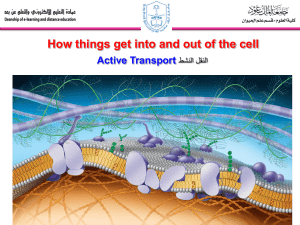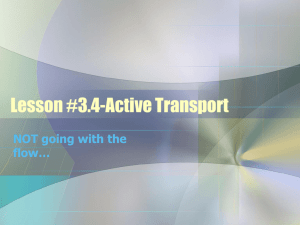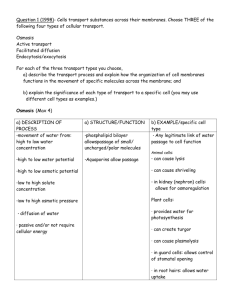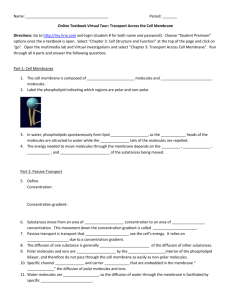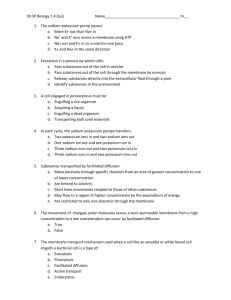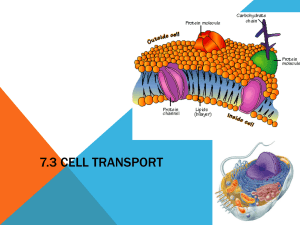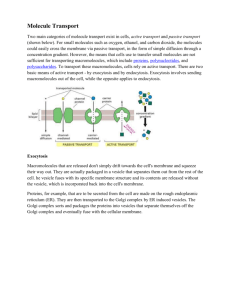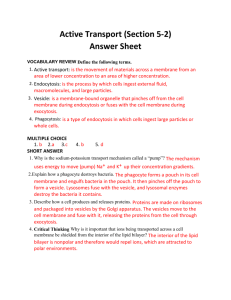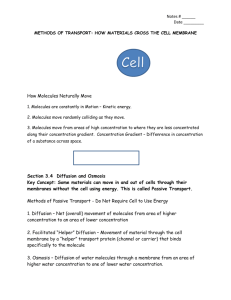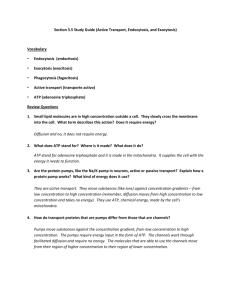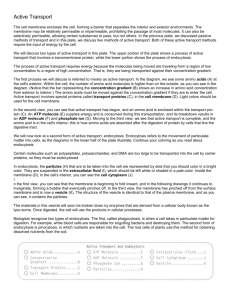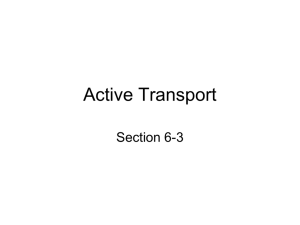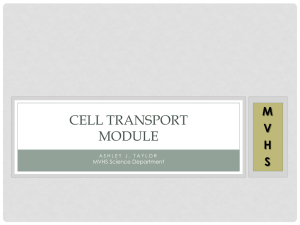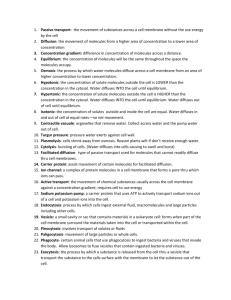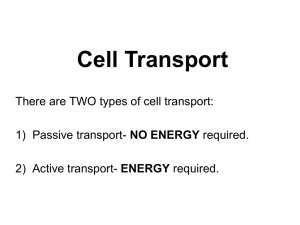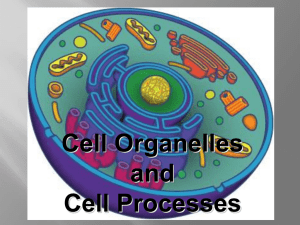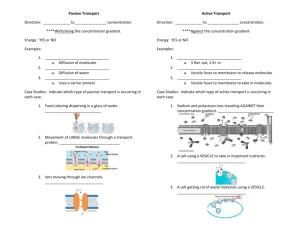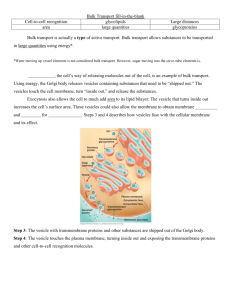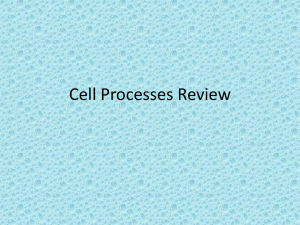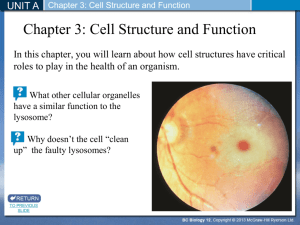Na +
advertisement
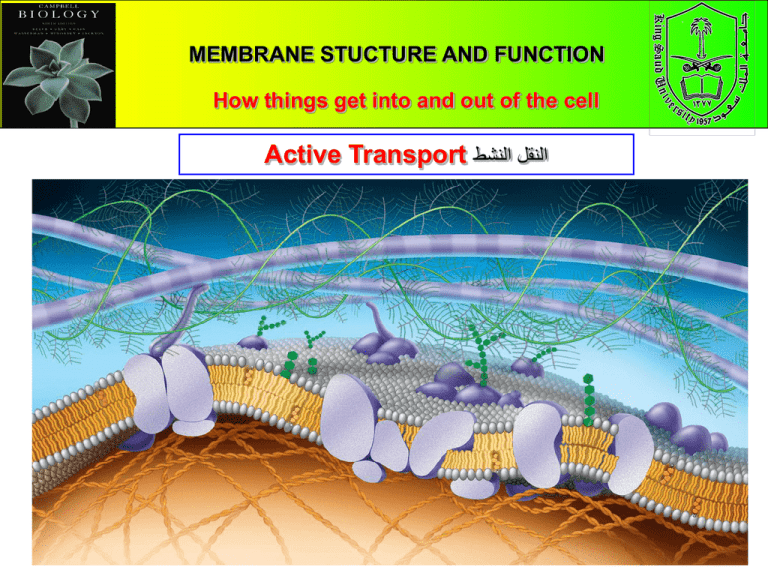
MEMBRANE STUCTURE AND FUNCTION How things get into and out of the cell Active Transport النقل النشط 1 Objectives • Distinguish between passive transport and active transport. • Explain how the sodium-potassium pump operates. • Compare endocytosis and exocytosis. Active transport is the pumping ضخ َ of solutes against their concentration gradients اإلنحدار التركيزي • Some facilitated transport proteins can move solutes against their concentration gradient, from the side where they are less concentrated to the side where they are more concentrated. • This active transport requires metabolic energy via ATP. • Active transport is critical بالغ األهميةfor a cell to maintain its internal concentrations of small molecules. • Active transport is performed by specific proteins embedded in the membranes called transport protein (T. protein). 3 1)- Transport of small molecules (Ions ) • The sodium-potassium pump actively maintains the gradient of sodium (Na+) and potassium ions (K+) across the membrane. – The animal cell has higher concentrations of K+ and lower concentrations of Na+ inside the cell. – The sodium-potassium pump (T. protein) uses the energy of one ATP to pump 3 Na+ ions out and 2 K+ ions in. 1ATP Outside the cell Na Na Na Na ATP T. protein Low conc. + 2 of K High conc. + of Na High conc. + of K Low conc. 3 of Na+ Protein molecule Cellular membrane Inside the cell 5 Two roles of membrane protein Both diffusion and facilitated diffusion are forms of passive transport of molecules down their concentration gradient, while active transport requires an investment of energy to move molecules against their concentration gradient. 2)- Transport of large molecules (macromolecules) Large molecules are transported by Exocytosis and endocytosis Small molecules and water enter or leave the cell through the lipid bilayer or by transport proteins. Large molecules, such as polysaccharides, proteins and lipoprotein particles cross the membrane by vesicles أوعية. 1. Exocytosis اإلخراج الخلوي: A transport vesicle budded from ينشأ من the Golgi apparatus is moved by the cytoskeleton to the plasma membrane. When the two membranes come in contact تالمس, the bilayers fuse يندمج and spill يُفرعthe contents to the outside. 2- Endocytosis اإلدخال الخلوي: A cell brings in macromolecules and particulate matter by forming new vesicles from the plasma membrane and include the following: A)- Phagocytosis اإلبتالع الخلوي: • Called “cellular eating”. The cell engulfs تـَ ْبلَعa particle by extending pseudopodia أقدام كاذبة around it and packaging it تـُغلفهاin a large vacuole. • The contents of the vacuole are digested when the vacuole fuses with a lysosome. 8 B)- Pinocytosis, “ الشرب الخلويcellular drinking”.♥ A cell creates a vesicle around droplets نقاطof extracellular fluid السائل الموجود خارج الخلية. – This is a non-specific process عملية غير متخصصة. C)- Receptor-mediated endocytosis: اإلدخال الخلوي عن طريق المستقبالت المتخصصة It Is called (Selective eating) which very specific in what substances are being transported. • It is triggered تـُستـَحثwhen extracellular substances bind to special receptors مُستقبـِالت خاصة, on the membrane surface. This triggers the formation of a vesicle وعاء • It enables a cell to take large quantities of specific materials that may be in low concentrations in the environment. Cell Transport Active Passive Large molecules Small Molecules/ions (Membrane) (T. protein) Exocytosis Facilitated diffusion (T. protein) Diffusion (Membrane) Endocytosis Phagocytosis Pinocytosis Receptor-mediated endocytosis Cellular eating Cellular drinking Selective eating http://www.northland.cc.mn.us/biology/biology1111/animations/passive1.swf 11
